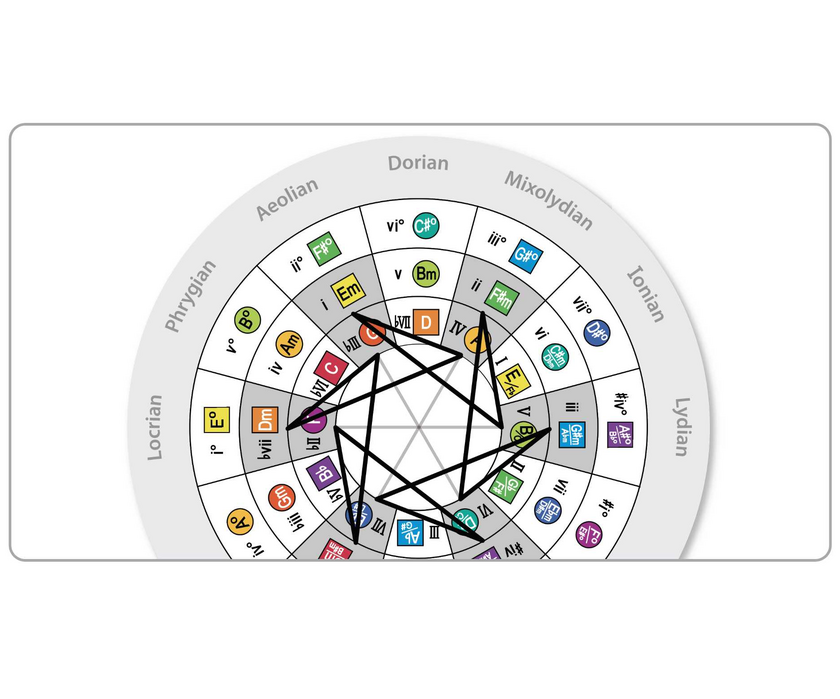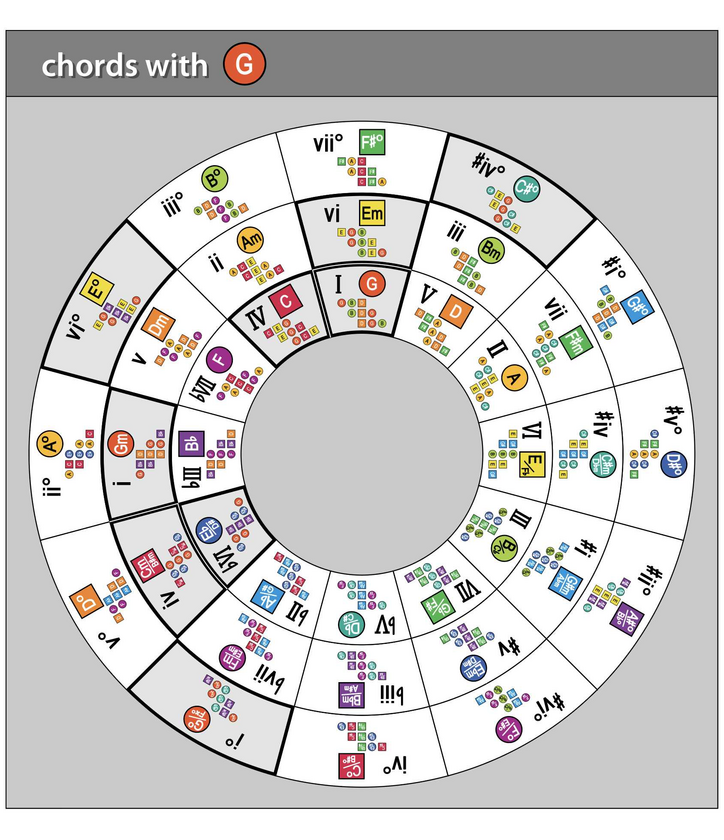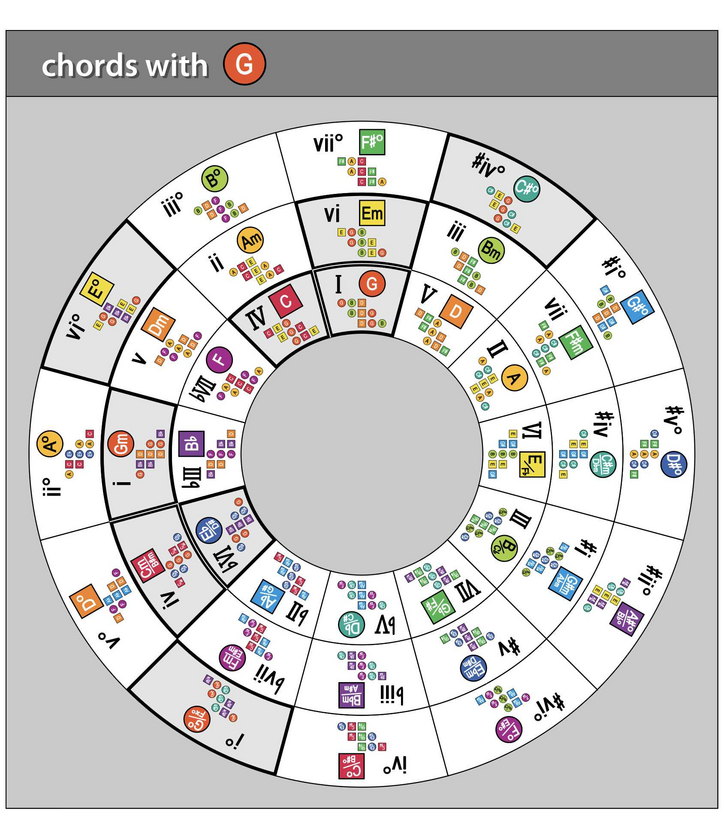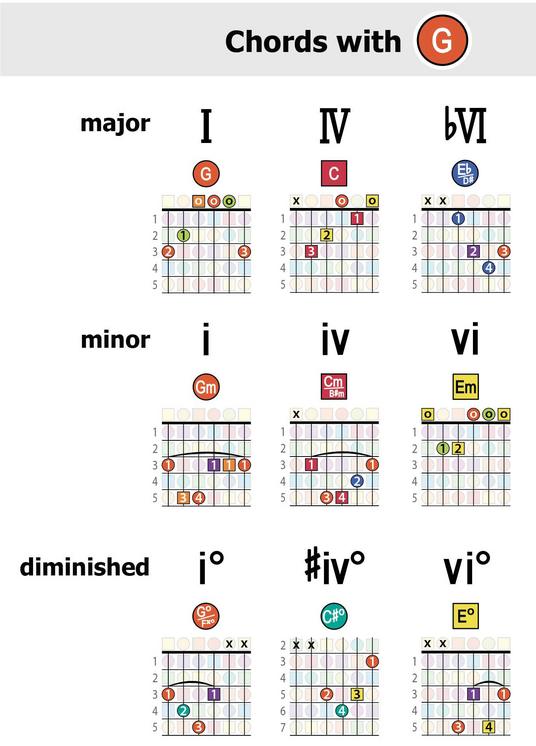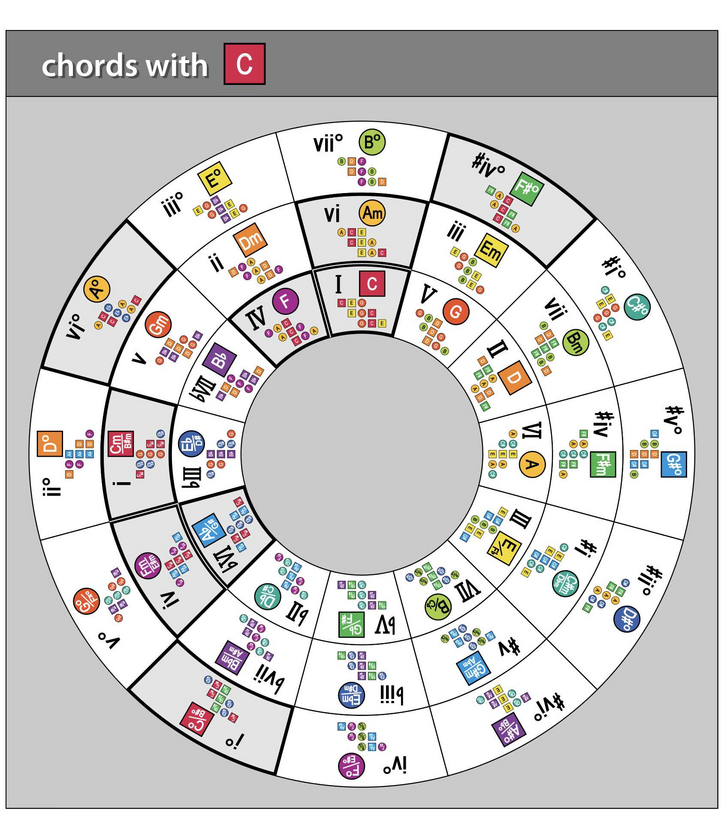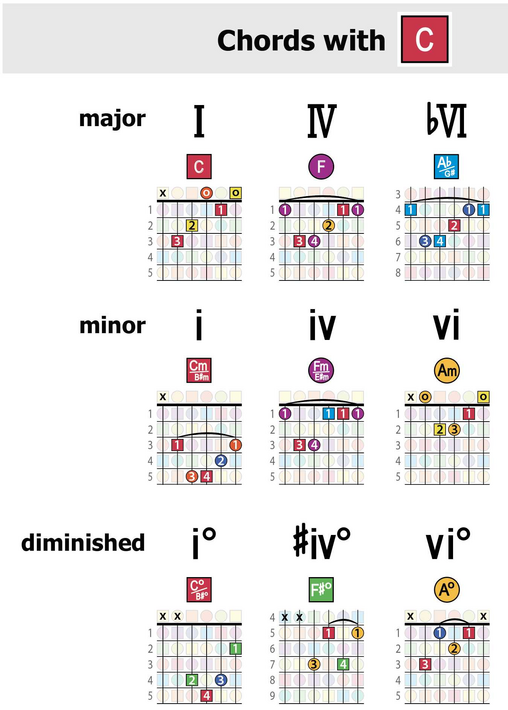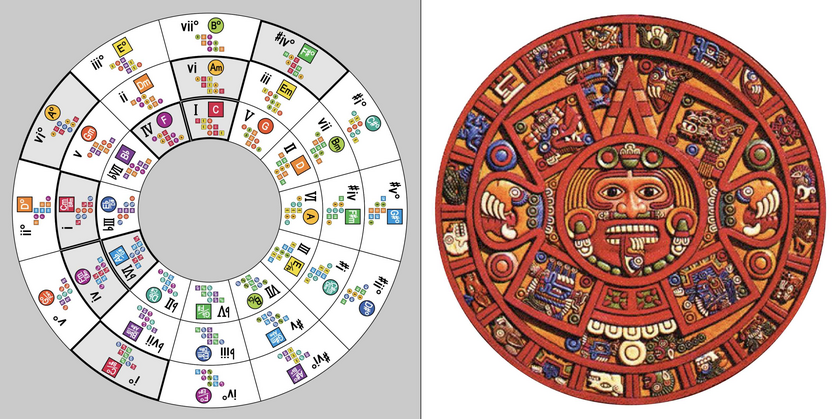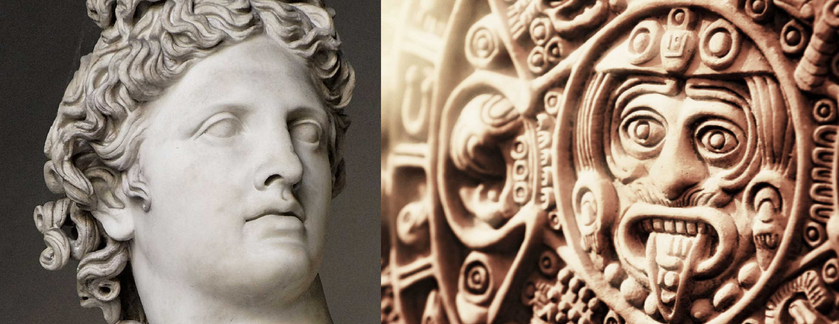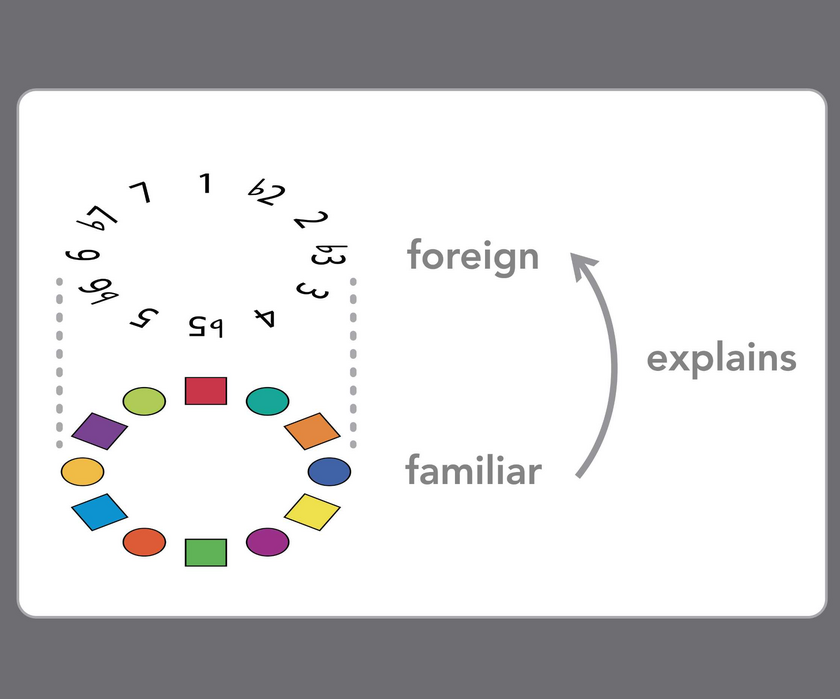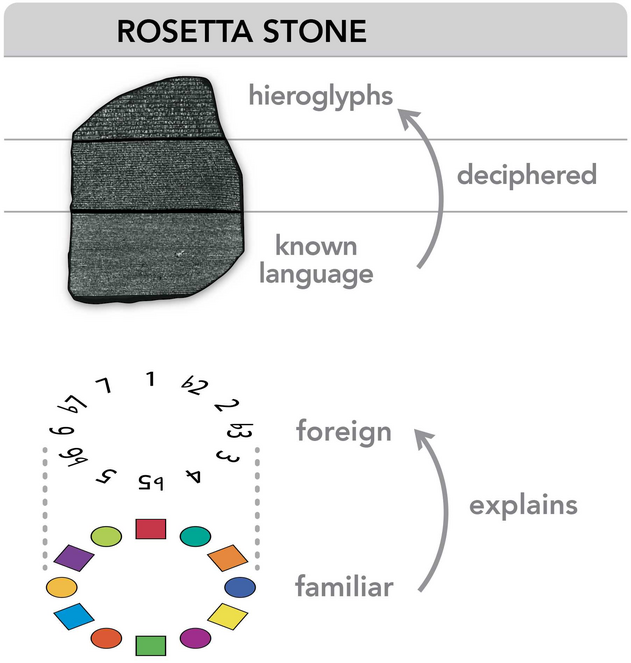Music is geometry. The patterns of any song are built on a hidden framework of organized sound. And in this video, we explore the circle of fifths to illustrate: https://youtube.com/live/AxhyAd8BD0c
Here are the accompanying diagrams to explore at your own pace.
In music, there are 6 fundamental symmetries that connect every note:
 Laid out side-by-side like this, these patterns are impossible to miss. And in the full theory course, I explain the utility of these relationships in detail.
Laid out side-by-side like this, these patterns are impossible to miss. And in the full theory course, I explain the utility of these relationships in detail.
But at a glance, it may not be clear how to apply these geometric patterns in practice. So here’s a nice example that shows how they are far more than pretty little diagrams.
We can call this example the “Circle of Fifths Dorian Vamp.” (Thank you, @keanimusic for suggesting this cool chord progression.)
In any key, the Dorian Vamp is a simple “i-IV” pattern. So in E Dorian, for example, the progression just moves back and forth between Em and A.
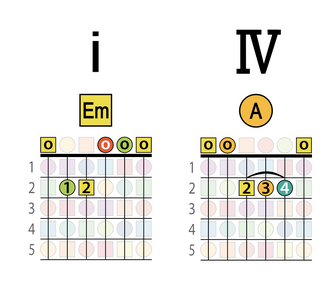
If you played only this all day long, it would sound great. (Em-A-Em-A … etc.).
But to add more movement, let’s say you play Em-A — but then move to A’s “iv” chord (Dm). This would then start another Dorian Vamp of Dm-G (or “i-IV” in D Dorian). So by doing this, you extend the pattern to: Em-A ... Dm-G.
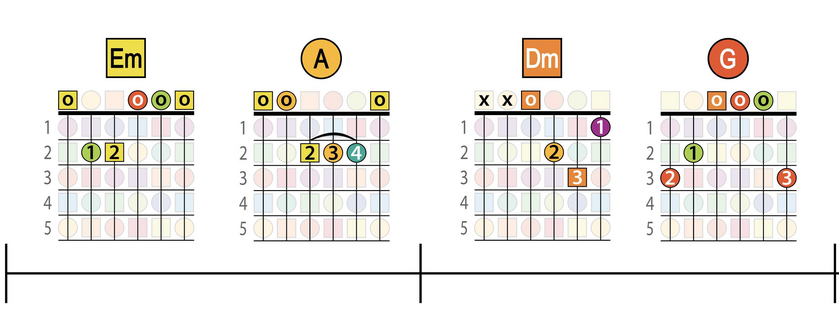 It sounds nice. And if you keep going, adding more mini vamps as you go, you eventually cycle back to Em where you started. Here's what it looks like....
It sounds nice. And if you keep going, adding more mini vamps as you go, you eventually cycle back to Em where you started. Here's what it looks like....
